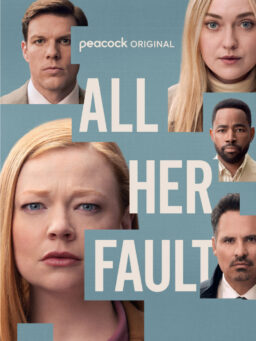HOLLYWOOD – Over in a corner of the big sound stage, John Wayne was playing chess. He was leaning against a packing crate and studying the board in complete oblivion to the commotion Henry Hathaway was raising 10 yards away.
Hathaway got into the movie business as a juvenile in 1909 and has been directing action and Western pictures since 1918. His directing style remains unchanged; he gets excited about three times a day and starts shouting at people. But he has white hair and looks gentle, as opposed to Otto Preminger, who has no hair and looks dangerous, and so Hathaway is known as a terror but regarded with affection.
Just now he was haranguing a group of extras who were supposed to be a courtroom crowd. “You’re all waiting for the other fellow to sit down,” he was saying. “Now it’s clear as day that some of you have got to sit down before the rest of you do. So when the judge comes in, don’t everybody stand around with his hands in his pockets.” His tone was that of an eminently reasonable ship’s captain addressing a cargo of madmen in the hold. “Now let’s try it.”
“Here we go,” Wayne said. He plays the part of Rooster Cogburn in “True Grit” (1969), a Western comedy, adventure, satire or what-have-you based on the best seller by Charles Portis. The press releases describe Rooster as a mean, ornery, one-eyed, no-good, low-down rapscallion, and Wayne obviously enjoys the part. He took another look at the chess board, decided not to move until the scene had been shot, got up and moseyed over to the set.
It turned out that the light men hadn’t arranged the lights to their satisfaction, so Hathaway decreed a 10-minute break and Wayne walked back off the set, pushing his eye-patch up on his forehead.
“This is, oh, maybe the fifth or sixth picture I’ve made with Hathaway,” Wayne recalled. “Every director has his own way of handling actors. John Ford, now, had a rapier wit and if he wanted to zing somebody he’d hit ’em quick and pull back. Henry, on the other hand, uses a club.”
What was the last picture by Wayne and Hathaway?
“Let’s see. That would be ‘Sons of Katie Elder.’ I don’t care for it much, myself. I had just got over that cancer operation and I thought I could hear myself breathing all the time. Everybody said it was my imagination. Well, old Henry was very thoughtful of me, of course, since I was recuperating and all. He took me up to 8,500 feet to shoot the damned thing and the fourth day of shooting he had me jumping into ice water. Very considerate.”
Wayne chuckled. “All the same, give Hathaway a good story, and that’s what ‘True Grit’ is, and he’s great. He’s not so good on his own stories; I found that out. He can’t quite get objective about them. But I love this story. I tried to buy the rights and then I found out Hal Wallis was bidding on it. Between us we pushed the price clear to the sky, and then Wallis got it and cast me anyway.”
The story involves a spunky little frontier girl (played by Kim Darby) who sets off to avenge her father’s murder and hires Rooster as her paid gunman. Glen Campbell, the hot young country singer and TV host, makes his screen debut in the film as a Texas Ranger.
“The picture’s got to make a bundle,” Wayne said. “And for a change I have a good part, I’d say this is my first good part in 20 years.”
There were protests from Wayne’s listeners.
“Well,” he said, “what the hell has there been? I’m always the straight guy who heaves the pack up on his back and shouts, ‘Follow me!’ Everybody else in the picture gets to have funny little scenes, clever lines, but I’m the hero so I stand there.
“Howard Hawks worked out a whole system based on that. He’d just stand me up as a target and run everybody at me. ‘El Dorado,’ that was just a remake of an earlier picture by Hawks, ‘Rio Bravo.’ And in both pictures you had Robert Mitchum or Dean Martin as the drunken sheriff, and you had the old deputy and the young kid, and where did that leave me?
“And in that picture, ‘Who Killed What’s-His-Name’? Yeah, the John Ford picture: ‘The Man Who Shot Liberty Valance.’ They had Lee Marvin as the colorful heavy, and that young Irish fellow playing the intellectual, and Andy Devine playing the best friend, and Jimmy Stewart to get a laugh kicking the horse crap out of his way, and what was left? Try to wind your way through that one…”
Wayne said he was talking in professional terms. “What I mean is, I haven’t been short of good roles in terms of starring roles, but I’ve gotten damn few roles you could get your teeth into and develop a character. Until Rooster in ‘True Grit,’ I haven’t had a role like that since ‘The Searchers‘ (1956). And before that, maybe ‘Sgt. Stryker’ or ‘She Wore a Yellow Ribbon,’ another great Ford picture.
“But look at ‘The Quiet Man.’ Everybody was a character but me. For three fourths of the movie, I had to keep alive. Just walking through it. Those are the tough ones to do. At least in ‘Rio Bravo,’ I had a couple of gags in addition to furnishing the father image.”
He unwrapped some peanut brittle and took a bite. “And old Rooster is going to be a lovely role. When this picture’s over I got to go to work and get some of this weight off.” He grinned. “But it’s pretty nice playing a fat old man.”
Hathaway walked over, slapped Wayne on the shoulder, and said, “All right then, Duke, let’s get to work. Always assuming, of course, that I can get those damn fools to sit down when the judge comes in.”
“Heah come de judge,” said Wayne.











